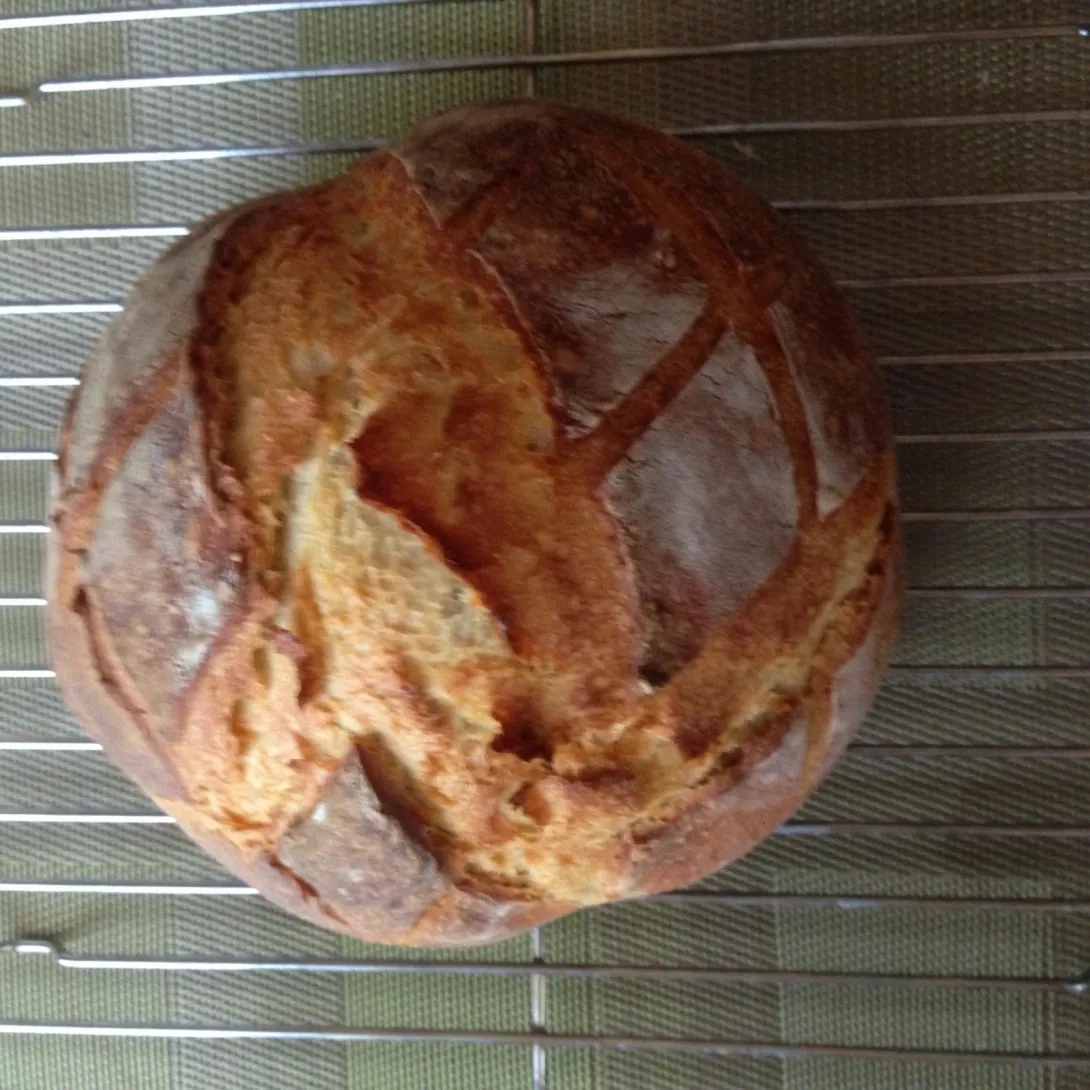
I’ve begun this thread, because I believe that it is important to rediscover older material that is still relevant to baking today. The method I elude to uses the food processor to knead the bread quickly while controlling the temperature. It’s almost no knead but the results are considerably better. My main question is: Where do I go next, now that I’m hooked? Suggested pathways? Please feel free to comment and add to the thread. The PremiseCharles van Over is due for a revival. His bread making method works, producing bread with complex flavors even with instant yeast (provided you retard the dough in the fridge). His book contains commercial (instant) yeast and sourdoughs and starters. The JourneyHistoryI'd been inching my way there by buying Chad Robertson Tartine Bread, because I liked the baking in Elisabeth M. Prueitt and Chad Robertson Tartine. I enjoyed that book so much that I bought the book after borrowing it from the library. But in bread. Robertson appears to suffer from OCD (obsessive compulsive disorder). Just to make the starter requires using 5 pounds of flour. The instructions go on for pages, with stories about how other people followed his basic recipe. Don’t get me started on Thomas Keller – placing metal pans with chains in them and then adding water just after adding the dough. Enough with complexity. (Note I had to tell my public library that the book was valuable and shoud be a reference book to be used only in the library. At that time it was selling for over $100 on the web.)
The return
Returned to bread making after being disappointed by the lack of good satisfying bread (except Proof in Atwater, Los Angeles). Even in good restaurants.
Started experimentingNo-kneadI know it's cheating but … First, I tried no-knead bread at 75% hydration (baker’s percentage – ratio of water to flour), using the seminal recipe from Jim Lahey My Bread. Lahey's recipe Panettone published in Gourmet December 2008 was so good and I had also made his no knead bread. Used ceramic stewpot in convection oven at 450F - 30 minutes covered and 15 uncovered (should have waited until the loaf reached an internal temperature of arround 210F. It was slighly underdone but was being toasted anyway. Another wayBut this attempt was disappointing. The loaf didn't have enough flavor and the crust was too thick. But it was better than any loaf I could easily buy. The result was chewy and somewhat satisfying, showing me that store bought bread is awful. I also found it dangerous to have to dump the dough into the hot pot. Looking at the website of the manufacturer of our stewpot, I discovered they made a cloche – that mimics the steam in a commerical oven, without using chains, pans, and water or misting I found that my local store had a version of a ceramic cloche, from my favorite French ceramic manufacturer – the same one that made my stewpot. At the store, I spoke with the manager about that cloche. She praised it and said that one of her pastry chefs in the cooking school at the store had used it and liked it so much that she bought one. I’d taken a course on Macarons from that chef. By chance, I was looking in the sale section, at the store, and found a version of that very cloche, in black. I bought it at 30% off. I had to call the chain’s customer service line to see whether I could preheat the cloche and then put the loaf in to bake. By web surfing, I discovered that the easy solution (even for the pot) is to have the final proof on a board topped with a piece of parchment paper, with the dough covered by a dusted cloth. You can then move the whole assembly to the oven and then transfer the loaf on the parchment paper to the hot container. I even acquired a banneton (now I’m hooked, I need the liner to make even more traditional loaves. If Chad Robertson uses it, I can. I want the telltale marks of the proofing cloth). Best Bread EverWhy not try an old recipe from Charles van Over The Best Bread Ever (1997)? Originally I bought the book because it was reviewed in Fine Cooking. I picked the lead recipe which has 63% hydration. I made several changes:- Rather than making three baguettes, I made two boules.
- Rather than spritzing the oven with water, I used a cloche.
- Rather than doing the second proof shortly after then end of the first (and the ineveitable forming), I retarded the dough overnight in the fridge. I followed the instructions in A Lesson in Fermentation – from Charles van Over’s book – to establish the preparation for the final proof, the forming, and the final proof time.
- The dough could be easily formed.
- The surface tension of the final proof was higher, retaining the shape better.
- It had a much more complex flavor.
- The crust was thinner but still satisfying.
- The loaf was denser with fewer airy holes.
- It made me want to bake more boules, with a greater variety of slashes. And anything that can fit within the cloche.
- It made me want to bake other kinds of breads, even the temperamental sourdoughs and starters.
works for you? You sound creative. Go for it! Learn Learn and enjoy!
Good looking loaf too! ...welcome to TFL where we love to talk about bread! and crumb and crust and texture...